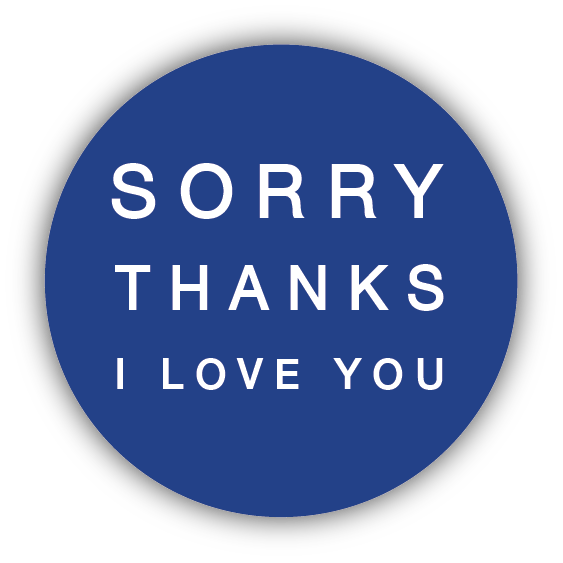Stefan Simchowitz x STILY

Marc Horowitz knows the secret to never growing up: it’s becoming an artist.
In an industry that takes itself so incredibly seriously, it’s almost impossible to fathom that the Los Angeles-based artist, whose career has been read as a series of practical jokes, has enjoyed success on such a major scale.
His art school critics have compared him to Hitler. The Economist has described him as disarming. Stefan Simchowitz, the art world revolutionary with whom we’re collaborating to bring Horowitz’s works to our store, won’t comment on whether he’s a good, great or rubbish artist. Regardless, his artworks fetch $15,000 a piece, he’s hit prime-time with The Today Show, and Mitsubishi has been known to pay him enormous sums for living out of one of their cars for seven days. The best part is that he’s made his name by creating what looks like series of beautiful pranks.
There’s the time he drove around the USA, tracing his own signature on a map with his car. There’s the time he and 30 artists posed as entrepreneurs in Silicon Valley, campaigning to remove the fog from the Golden Gate Bridge so that tourists could take better photos. There’s the time he started a semi-nudist colony in Colorado. There’s the time he allowed an anonymous online audience to make his major life decisions for him. And then, somewhere between squatting in a cookie factory with an AI scientist and breaking a Peruvian statue during a university interview, there was ‘Free Ideas’: a performance art project that involved handing out pieces of paper to strangers in the street and realising their ideas for them.
“I’m not really an intellectual, you know?” Marc has said. “I think I’ve made a lot of my process like taking ideas that are small; some would say that they’re half-baked.”
It’s a route to fame and fortune of which more traditionally schooled artists certainly don’t approve – and perhaps one of the reasons he’s such a great fit for internationally despised art dealer Stefan Simchowitz. Simchowitz has been described by the New York Times as the “art world’s Patron Satan” and blacklisted from major galleries around the world thanks to his unorthodox approach to art buying and his clientele: an exclusive network of Hollywood film stars, dot-com entrepreneurs and professional baseball players.
“He works hard to give his artists a leg up into the art world, and pushes me to make better work, always,” says Horowitz, who met Simchowitz through his wife, artist Petra Cortright.

Prior to meeting Stefan, Horowitz’s “big break” came after he finished business school – an undertaking he self-funded – and got a job as a photo assistant at Crate & Barrel. He scrawled the words ‘Dinner with Marc’ and his phone number on a blackboard in the backdrop of one of the catalogue shots and made a bet with his colleagues: if anyone called him, he would take them out to dinner. On publication date, more then 70 phone calls flooded in. Horowitz decided to take turn the joke into an art piece he called "The National Dinner Tour" and travelled around the for about a year, having dinner with strangers.
"This early blogger Jason Kottke blogged about it and then the New York Observer picked it up," he says. Then he went viral on TV and Horowitz eventually won a spot on People magazine's “50 Hottest Bachelors”.
These days Horowitz says he’s dealing with “more abstract and maybe even philosophical or theoretical ideas” through painting and sculpture. “Playing with paint texture more and figuring out how to merge that with a particular humour,” Horowitz says. “Let’s call it the “New Humor Movement.”
A collection of Horowitz’s large scale paintings from his series Thank You. That was most illuminating. is currently hanging in the newest Sorry Thanks I Love You space at No 5 Martin Place. “I was merging cinema, stage direction, propping, screenplay notes into these paintings,” says Horowitz.

“I had just gotten married, we moved into a huge studio and I had the time, space and freedom to spread out. I had an indoor archery range. I had just gotten sober and wanted to return to painting again. I’d been thinking about it for the past 15 years. It was finally time to return.”

Horowitz pulled materials from reference and research, and start looking for the scene that set a tone to which he could respond with paint.
‘An automated coffee maker has been left on, and the solidified coffee at the bottom of the pot is smoking. No one cares.’ ,the title of one of these works, is indicative of the project’s flavour.
“That scene gets placed as a backdrop on canvas, and then is washed out and pushed back and back, before I go in with colour and shape and comedy, and all the other things I’m thinking about in multiple time-spaces.”

To an outsider, Marc’s energy and joi de vivre verges on the insatiable. He goes to extraordinary lengths to have a good time, to make people laugh, and to produce good work – depending on which side of the prism you’re looking through.
But underpinning all of it is a tension between the clown and the comedian.
“Charlie White said, ‘Kill the clown, but keep the comedian…’ The clown is never dead, the project is always about killing the clown and keeping the comedian,” says Horowitz. “I think maybe if the clown is ever dead then the artwork is no longer about that tension and work and effort to battle against the clown. Sometimes it doesn’t work out, sometimes it does, and the balance is what keeps the work dynamic.”

**
A collection of Marc Horowitz’s paintings are for sale in store at our newest space at:

Sorry Thanks I Love You
